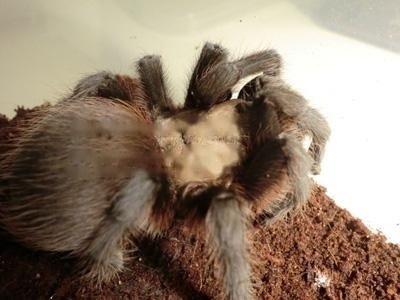
Texas Brown Tarantula
Adult body length is 13-14 cm, suitable temperature is 28-30 ℃, and suitable humidity is 65%. It is recommended to use moist peat, coconut brick and clay as the substrate. It tak
Origin: Guadeloupe, Latin America Island
The spearmint of spears Dynastes (Dynastes) is a giant beetle of the family Rhinoceros beetle: Dynastes hercules, a subspecies of which is introduced here : Dynastes hercules hercules. Usually referred to as: DHH or DHH. It is a nocturnal insect with phototaxis. The light brown dorsal shell has star spots on it, and the black and bright chest horns are extremely long and stout. There are individual dorsal shells that are light gray, and some are bluish. There are many subspecies of the genus hercules in Dynastes. The difference between the subspecies is distinguished from the angle, and the different shapes represent different subspecies.
Chinese Literal Name : Rhinoceros Beetle
Family: Rhinoceratidae
Genus: Rhinoceratidae Giant Beetle
Distribution Region: Latin America, Guadeloupe, Dominica (Island of the West Indies
Individual size : Male 45~180mm, thoracic horn 70mm, female 50~80mm, no head horn and thoracic horn. The largest individual recorded in the wild is 180mm, and the record in captivity is 196mm, so it can be said to be the largest insect found in the genus Dynastes. Individual.
Others: The rhinoceros beetle is one of the largest insects in the world and a treasure in the beetle collection. The species name Hercules (Hercules) is the son of the main god Zeus in Greek mythology. For Hercules.
The feeding method of larvae: Usually, the relative space of each larvae is better than 4-5 liters.
Separate feeding:
Each larva is raised in a separate container, which requires a lot of space, but it can improve the probability of raising large individuals. The disadvantage is that such independent feeding will cause the male and female larvae to be affected by the different emergence time and affect the pairing.
Improvement method:
1. Each time the soil is changed, the remaining old soil in each box can be mixed with new soil and distributed to each feeding box.
2. Third instar In the mid-term, mixed breeding, but the male and female individuals may lose some weight due to mixed breeding, but it will not be much worse.
Mixed breeding:
Although the space occupied is not much, the body size of the male and female bred will be much different, but the time of eclosion will not be The difference is very long, and the larval period is also shorter than that of single feeding.
Larval stage: about 14 months to 26 months.
Larval ingredients: Jiujiuyang humus + Jiujiuyang fermented wood cutting ratio 1:1. Humidity can be a little more wet than breeding, and add a little wood.
Generally, halberds are mostly artificially bred, so it is necessary to pay attention to whether the adults have passed the dormant period before mating.
After the dormant period, the adults almost all start to feed. The touch method can be used to see if the adult worms have intimidating movements, and their claws have great grasping power. If there is, it means that the adult worms have passed the dormant period and can mate.
Feeding supplies: feeding box (large-scale sorting box), humus soil, humus, adult climbing bark or wood chips, etc.